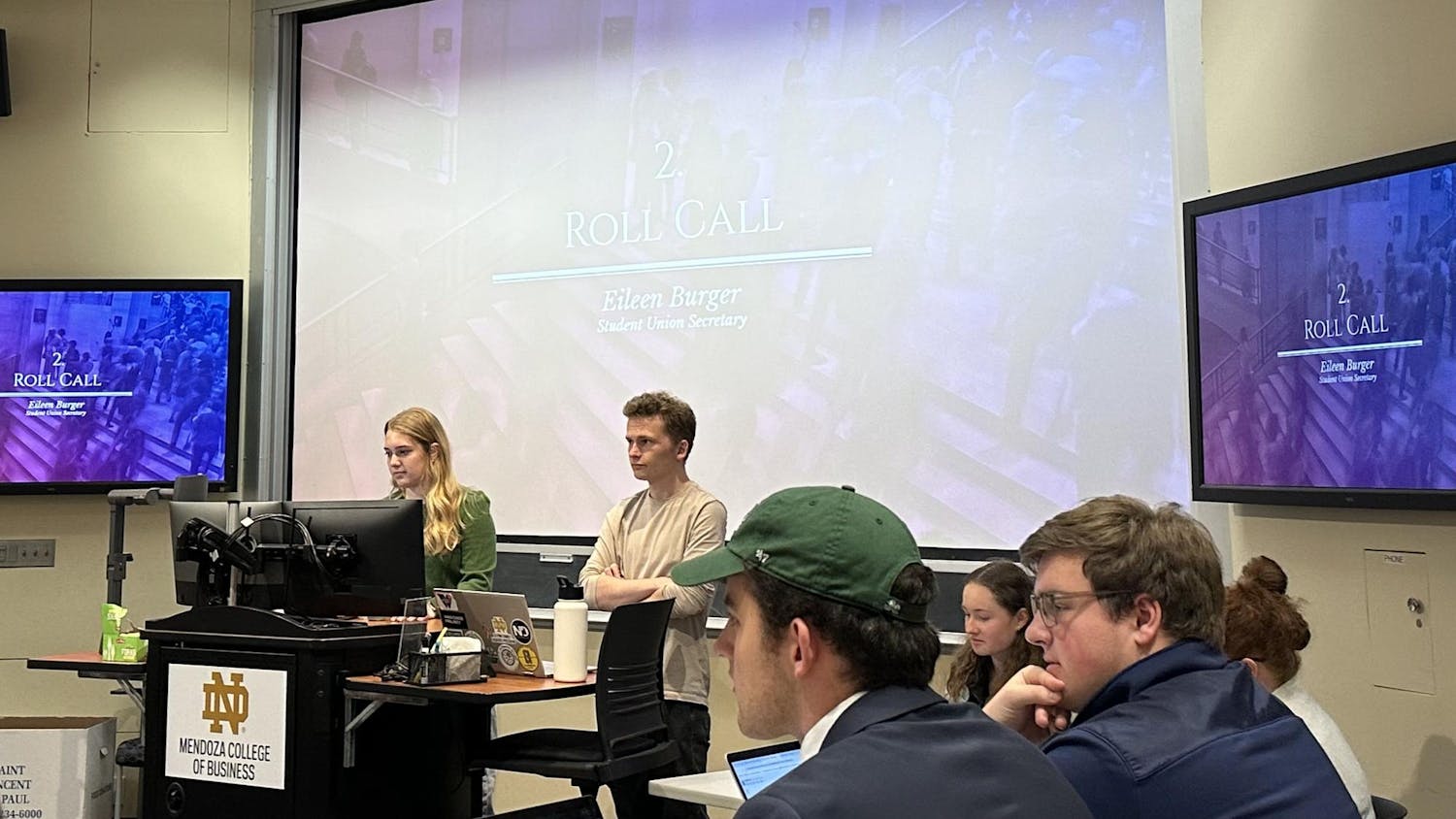To the average person, the mind-boggling size and expansion of the universe can be more than difficult to grasp.

But for Nobel Prize-winning physicist Brian Schmidt, thinking over the biggest of questions about the existence of the universe is all in a day's work.
Schmidt, a distinguished professor at the Australian National University who was awarded the 2011 Nobel Prize in Physics for his work on the acceleration of the universe, spoke about his team's discoveries to a packed house in the Jordan Hall of Science on Monday in his lecture, "The Accelerating Universe."
The 1998 discovery that earned Schmidt and his colleagues Adam Riess and Saul Perlmutter worldwide recognition occurred when two teams of physicists used advanced telescopes to take images of faraway objects, such as supernovae, effectively allowing them to look back millions of years into the universe's history.

Notre Dame physics professor Peter Garnavich was part of the same research team and was invited to attend the Nobel Prize award ceremony in Stockholm, Sweden, in December to support fellow members of his team who won the prize.
Schmidt's team collected cosmological data from 15 such objects and analyzed the light spectra of each object to "see how much the universe is stretching," which in turn allowed the team to conclude after several months that the universe accelerates and expands and will continue to do so for billions of years to come, he said.
"[Finding supernovae] was like sifting for a needle in a haystack because these type 1a supernovae only appear about once every 250 years," he said. "We found supernovae by taking two images at different times and comparing them, enabling us to do an experiment [Edwin] Hubble did and look back 10 million years into the past."
Schmidt said both his High-Z Supernova Search Team and Perlmutter's Supernova Cosmology Project drew on the principles of Hubble's 1929 experiment that used a telescope to compare the brightest star in our galaxy with the brightest star in another galaxy in order to demonstrate the relationship between a star's brightness, the motion of its galaxy and its relative distance from Earth, which provided the first evidence of the expansion of the universe.
Schmidt said Hubble's theory was supported by Einstein's "real big hit" of scientific theories ⎯ the idea that gravity and acceleration are indistinguishable in space.
"Einstein had to predict a lot of things to prove this idea, and it took him eight years to do it, but he just thought it must be true," he said. "The idea changed our fundamental view of how the universe works because it allowed us to make predictions about the universe on its whole."
Some current predictions about the universe based on Einstein's theory of gravity include the impact of the relatively unknown phenomena of dark matter and dark energy, the latter of which Einstein himself conceptualized by inventing the cosmological constant in 1917, Schmidt said.
Though this theory led Einstein to commit his "greatest blunder" in predicting that gravity pushes, rather than pulls, the universe, Schmidt said the idea of dark matter led to later discoveries about the makeup of the universe and what causes its acceleration and expansion.
"The universe must be a mix of normal gravitating matter and material that can push on the universe, or dark energy," Schmidt said. "It was like saying, ‘Hey guys, we didn't know about 70 percent of the stuff in the universe, and that stuff [dark energy] pushes on the whole universe.'"
Schmidt said much of his team's prize-winning work depended on several experiments measuring the positions of different galaxies, the total gravity of the universe and the amount of "stuff" contained within it.
Based on data collected from analysis of the Cosmic Microwave Background, a picture of the universe that shows "all the sound waves sloshing around" in it, scientists determined the relative makeup of the universe by substance.
"[This experiment] enables you to measure the geometry of space directly, and it was first done in 2001," Schmidt said. "It was determined that one percent of the universe is flat, and the universe is composed of 72 percent dark energy, 24 percent dark matter and four percent atoms."
This model of universal composition has predicted almost every cosmological phenomenon "on the money," Schmidt said, and a major focus of cosmology today is predicting the future of the universe, especially in terms of dark matter and dark energy.
"There's a battle between dark energy and dark matter, or the push and pull on the universe," Schmidt said. "The big question in physics now is whether or not this [dark] energy gets created exactly with space, or a little slower or faster."
Schmidt explained the theoretical effects of the creation of dark energy in relation to the universe's expansion as a "battle of the universe."
"If dark energy is created exactly as space is created, dark energy wins the battle of the universe, the cosmos accelerate and the creation of space happens more quickly than even light can travel," he said. "As the universe expands, the light emitted by those galaxies will never reach us, and eventually we will live in an empty universe except for our super galaxy."
The key to predicting the future of the universe lies in discovering and understanding what accelerates the cosmos, Schmidt said.
"Until we understand what dark energy is or what accelerates the cosmos, anything is possible," he said. "If dark energy is created more quickly than space itself, it will eventually accelerate everything down to the subatomic level to where everything is an infinite distance apart, and the universe will expand and fade away at an ever-increasing rate."












